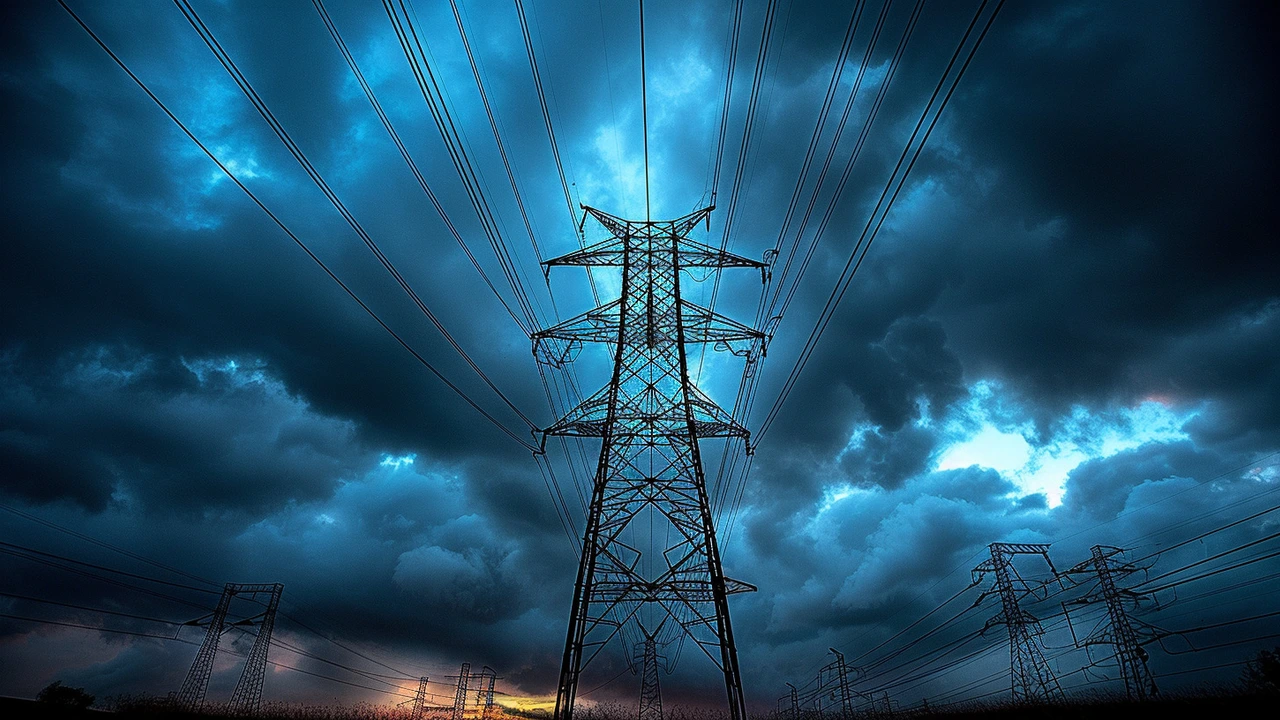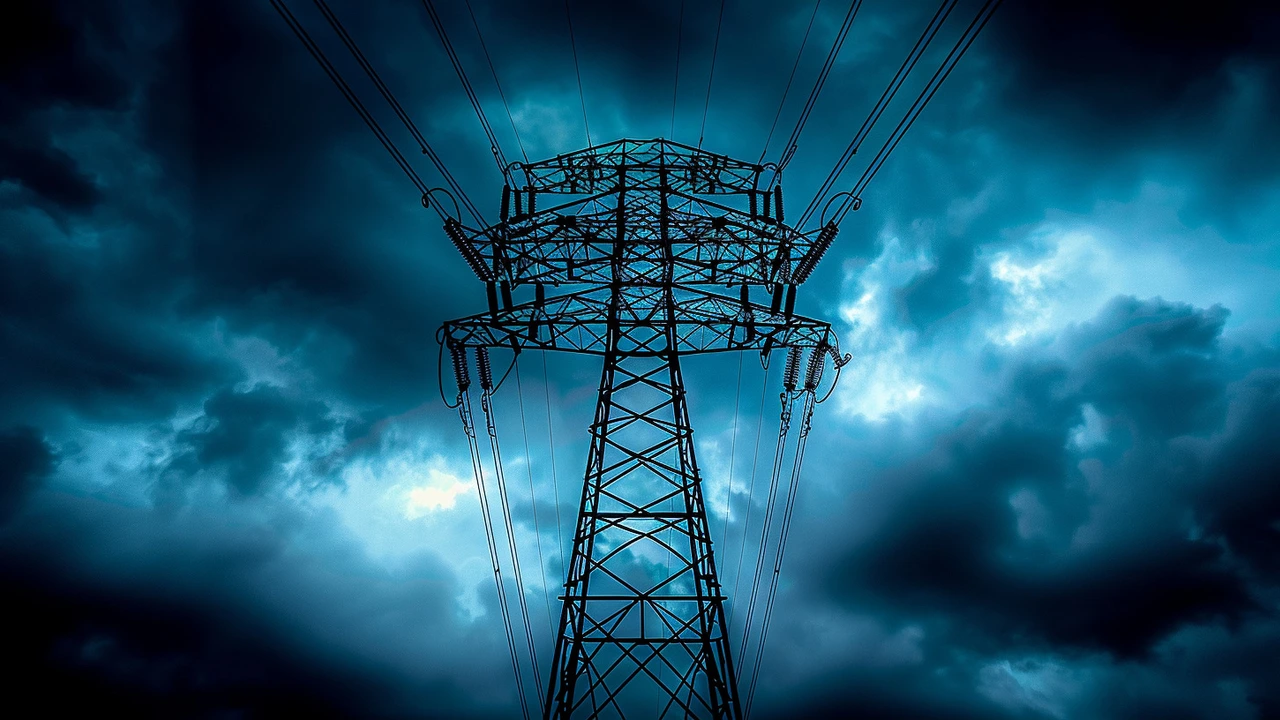Load Reduction Measures: Why Johannesburg Had to Act
City Power in Johannesburg has implemented load reduction measures to safeguard its power systems and infrastructure, reflecting an urgent response to escalating consumption levels that could threaten a complete grid failure. The city, like much of South Africa, has experienced an uninterrupted power supply for over two months, sparking higher electricity usage that now demands intervention to prevent a dire energy crisis.
With Johannesburg's electricity consumption reaching critical peaks, City Power has no alternative but to impose load reduction, primarily targeting high-density areas and informal settlements from 4 am to 10 am and 4 pm to 10 pm daily. Such measures are not just about reducing usage but ensuring that each household, while restricted in energy-hungry appliances, still has access to essential electricity.
Understanding the Critical Situation
To comprehend the necessity behind these stringent measures, one must consider the precarious state of Johannesburg's energy grid. The relentless demand for electricity, especially during peak hours, places immense strain on the infrastructure, increasing the risk of transformer failures and substation explosions. This isn't just a theoretical risk. Real-world consequences loom if the grid isn't adequately managed.
Load reduction involves reducing loads at substations and disconnecting illegal connections, often prevalent in densely populated informal settlements. These illegal connections contribute significantly to the excessive load, precipitating critical levels of consumption that the infrastructure simply cannot sustain.

The Mechanics of Load Reduction
Load reduction isn't merely about switching off the lights. City Power has devised a strategic approach that ensures each household still receives electricity but constrains high-energy appliances. This deliberate throttling of energy supply forces residents to evaluate their load profiles and adjust their usage accordingly.
High-energy-consuming appliances such as geysers, air conditioners, and others may not operate during these load reduction periods. The goal is to maintain grid stability by curbing the use of appliances that draw significant power. By doing so, City Power aims to preserve the integrity of the network, reducing the likelihood of infrastructure damage.
Community Responsibility and Practical Steps
The onus isn't solely on City Power; residents must also play their part. Understanding and managing their electricity consumption becomes critical. Households, particularly in affected areas, should learn to assess their load profiles and use their appliances wisely. This includes limiting the use of non-essential high-energy devices and being conscious of peak usage times.
City Power's load reduction schedule divides affected areas into six blocks, each facing up to two-and-a-half-hour intervals of reduced electricity. By disseminating this information, the utility ensures that the community is informed and prepared to adjust their electricity usage patterns accordingly.

Preventing Transformer Failures and Penalties
When the demand for electricity surpasses the grid's capacity, transformer failures and other technical malfunctions become imminent threats. Overloaded transformers can fail or explode, causing extended outages and necessitating costly repairs. Hence, load reduction not only prevents infrastructure damage but also circumvents significant economic repercussions for the city.
Moreover, City Power faces penalties from the National Energy Regulator of South Africa (Nersa) and Eskom if the demand exceeds a set threshold. These penalties add a financial burden, reinforcing the necessity for load reduction measures to maintain both operational efficiency and economic stability.
Looking Ahead: Winter Challenges and Beyond
The demand for electricity is set to spike further as Johannesburg moves into winter, where mornings and evenings see increased usage for heating and lighting. This seasonal surge places additional pressure on both local and national grids, necessitating prudent energy management beyond just load reduction.
While load reduction is a strategic move to mitigate immediate risks, long-term solutions are indispensable. Upgrading the infrastructure to handle higher demands, promoting energy-efficient appliances, and encouraging renewable energy adoption are critical steps towards a sustainable energy future for Johannesburg.
In conclusion, City Power's load reduction measures are a necessary challenge that requires collective effort and awareness. As the city navigates peak electricity demand periods, both residents and the utility must work in tandem to ensure grid stability and prevent a total collapse. By understanding the urgency and acting responsibly, Johannesburg can weather this energy crisis and build a resilient power infrastructure for the future.







Damian Liszkiewicz
Hey everyone, the load‑reduction plan is a collective experiment in restraint, and it’s a perfect chance for us to practice mindful energy use 🌱.
Think of it as a communal meditation on electricity – every kilowatt saved is a breath of relief for the grid.
Angela Arribas
While the intent is noble, the post could have benefitted from clearer phrasing – for instance, “high‑density areas” should be hyphenated, and “uninterrupted power supply” is contradictory, given the context. :)
Sienna Ficken
Ah, the classic “grid is about to explode” alarmist headline-so original! In reality, the city’s demand curve is just an overcooked soufflé: it rises, it falls, and if you don’t turn down the oven, it collapses. The remedy isn’t a magic switch, it’s disciplined consumption and some good‑old‑fashioned infrastructure upgrades. 👀
Zac Death
Listen, I get the sarcasm, but let’s be real-I’ve lived through load‑shedding, and those two‑and‑a‑half hour windows are the perfect time to reset habits, not just to whine about missing Netflix.
We can actually use this as a community challenge: who can go the longest without the geyser? It’ll bring us together, boost morale, and hey, it might even lower the strain on those aging transformers. Let’s turn frustration into motivation-trust me, it works.
Lizzie Fournier
Load reduction isn’t just a technical fix; it’s a chance for neighborhoods to rally around a shared goal-saving power, saving money, and keeping the lights on for everyone.
JAN SAE
Exactly! Let’s take it step by step-first, identify the high‑energy appliances, then set realistic off‑peak schedules, and finally celebrate each small win, because every kilowatt matters!!!
Steve Dunkerley
The implementation of load‑reduction measures in Johannesburg offers a vivid case study of how demand‑side management can mitigate grid stress, especially in metropolitan contexts with high per‑capita consumption patterns.
First, the temporal segmentation of power curtailment (4 am‑10 am and 4 pm‑10 pm) aligns with peak demand windows, thereby flattening the load curve and reducing the probability of transformer overload.
Second, targeting high‑density informal settlements addresses the disproportionate contribution of illegal connections to aggregate load, which is often exacerbated by suboptimal load‑profile management.
Third, the scheduled block system-dividing the city into six zones with staggered reduction intervals-optimizes the distribution of residual capacity across the network, preventing simultaneous over‑draws that could trigger cascade failures.
From a technical standpoint, minimizing peak‑to‑average ratio (PAR) directly lowers thermal stress on transformer windings, extending equipment lifespan and decreasing the incidence of catastrophic failures such as winding insulation breakdown or core saturation.
Moreover, by curbing the activation of high‑power appliances (e.g., electric geysers, air‑conditioners), the strategy curtails reactive power demand, which can otherwise destabilize voltage regulation across the distribution feeders.
In terms of regulatory compliance, adherence to NERSA thresholds averts punitive fines, which have historically been a significant financial drain for municipal utilities.
Economically, the reduction of transformer failures translates into lower Capital Expenditure (CAPEX) on emergency replacements and less downtime for customers, preserving productivity and public welfare.
Looking forward, the winter season will inevitably elevate heating loads; therefore, proactive demand‑response programs, such as incentivized adoption of energy‑efficient heat pumps, will be essential to sustain the gains achieved by current load‑reduction policies.
In parallel, investment in smart‑grid technologies-advanced metering infrastructure (AMI), real‑time load monitoring, and automated load‑shedding-can provide granular control, enabling more precise curtailments without broad, blunt‑force outages.
Furthermore, integrating renewable energy sources (solar PV, wind) at the distribution level reduces reliance on centralized generation, alleviating pressure on the transmission network during peak periods.
Community engagement initiatives, including educational campaigns on load profiling and appliance efficiency, empower residents to become active participants in grid stability, fostering a culture of energy stewardship.
Finally, long‑term strategic planning should prioritize grid modernization, encompassing transformer upgrades to higher capacity ratings, deployment of fault‑tolerant distribution architectures, and adoption of micro‑grid solutions for resilient localized power supply.
In sum, Johannesburg’s load‑reduction approach is a pragmatic interim solution, but its true efficacy will be amplified when paired with comprehensive infrastructure investment, regulatory support, and community‑driven demand‑side initiatives.
Jasmine Hinds
yea load curbs help keep the lights on 😁
Madison Neal
Load reduction saves the grid.
John Crulz
Interesting point-by aligning household usage with off‑peak windows, we not only protect infrastructure but also open avenues for innovative demand‑response programs that could reward users for flexibility.
Anita Drake
The collective effort of residents and utilities will be key to maintaining stable power for Johannesburg’s future.